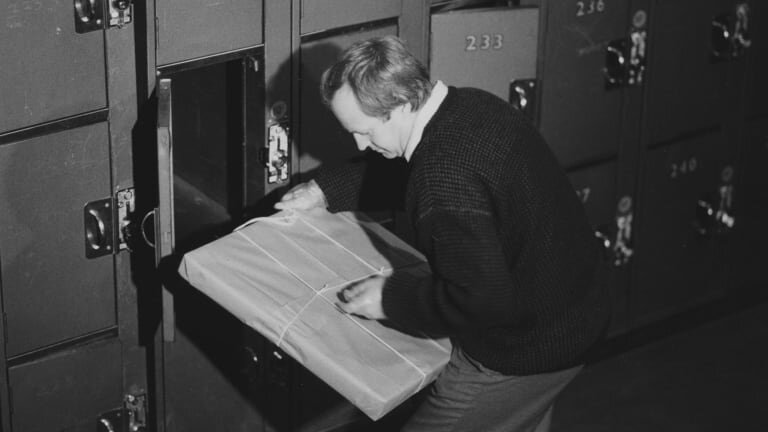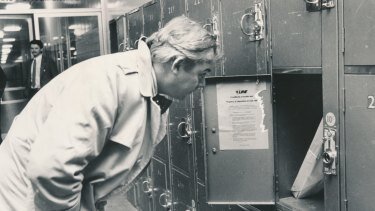The Picasso Ransom Prize Price
The National Gallery of Victoria's Weeping Woman. Oil on canvas, 55cm x 46cm.
Thirty-four years ago, Pablo Picasso’s painting “Weeping Woman” was stolen from the National Gallery of Victoria by the self proclaimed Australian Cultural Terrorists and held for ransom, what they wanted in exchange for the painting was more Victorian government funding for the arts. At the time of its theft, “Weeping Woman” was the most valuable painting ever purchased by a public Australian art gallery. The National Gallery of Victoria (NGV) paid $1.6 million AUD for it in 1985 which is over $2,700,000 in today’s coinage.
The stolen artwork was one of a series of paintings by Picasso in France in 1937, another version of the painting hangs in the Tate Modern, London. While that version is quite colourful, the NGV’s version is full of acid green and purple.
Before the NGV’s purchase of “Weeping Woman”, for and on behalf of, the people of Victoria, the highest price paid by a major
gallery in Australia for a painting was for Jackson Pollock's “Blue Poles”, which hangs at the National Gallery of Australia.
A note about the names, we have two galeries in Australia that term themselves ‘national galleries’, one the actual national gallery of the people of Australia, the NGA, and the other, the National Gallery of Victoria, Australia’s oldest and biggest art gallery, the NGV. The NGV is called a national gallery because it was founded before the federation of Australia when Victoria was a colony and ran, in effect, as a separate country.
The then director of the NGV, Patrick McCaughey, boasted that the acquisition was “the most expensive purchase by any Australian gallery", and that "This face is going to haunt Melbourne for the next 100
years." The face was definitely going to be haunting Mr McCaughey soon enough.
On Saturday 2 August 1986, the Australian Cultural Terrorists, walked into the NGV, unscrewed the painting from its wall mounting, removed the mounted canvas from the frame, and left the gallery without being stopped, caught or seen by anyone at all. They definitely knew what they were doing as a specialised type of
screwdriver was needed to get the painting off the wall and this tool was not generally available to the public. Also the manner of the theft was meant to be an ironic homage to the theft of the Mona Lisa from the Louvre in 1911 by Vincenzo Peruggia. Peruggia was an Italian nationalist and claimed to be taking the Mona Lisa back to Italy where it belonged after Napoleon stole it.
No one noticed the “Weeping Woman” was missing for two days. The Australian Cultural Terrorists had left a card where the painting used to be stating that the painting had been removed for routine maintenance and either (or both) no one noticed or thought twice about it. In fact NGV staff had assumed that "ACT", the signature on the card left behind by the Australian Cultural Terrorists meant that the painting had been transferred to the NGA, in the Australian capital, Canberra. Canberra is located in the Australian Capital Territory, or in the “ACT”. As far as the NGV thought the painting was taken by the NGA to the ACT and not by the terrorist ACT.
Let’s pause for a moment here and also note that the painting was not insured, taking out insurance on these types of artworks was prohibitively expensive according to the then Arts Minister, Race Mathews. Particularly as the painting has been valued at being worth over $100 million Australian dollars in today’s money.
The Terrorists wrote a ransom note to the Minister, which was published in the Melbourne newspapers like The Age on 5 August 1986:
“We have stolen the Picasso from the NGV as a protest against the ... funding of the fine arts in this hick State and against the clumsy, unimaginitive stupidity of the administration and distribution of that funding”
The ACT, the thieves, not the Australian Capital Territory (which is spectacularly beautiful by the way!) had two main demands that needed to be met or they would set fire to the painting. The ransom note said:
1. The Minister must announce a commitment to increasing the funding of the arts by 10% in real terms over the next three years, and must agree to appoint an independent committee to enquire into the mechanics of the funding of the arts with a view to releasing money from its administration and making it available to artists.
2. The Minister must announce a new annual prize for painting open to artists under thirty years of age. Five prizes of $5000 are to be awarded. A fund is to be established to ensure that the real value of the prizes is maintained each year. The prize is to be called The Picasso Ransom.
Because the Minister of the Arts is also Minister of Plod, we are allowing him a sporting seven days in which to try to have us arrested while he deliberates. There will be no negotiation, At the end of seven days if our demands have not been met and our campaign continue.
Your very humble servants,Australian Cultural Terrorists
The Victorian government refused to accept any of the demands and offered a $50 000 reward (just over $134,500 in today’s money) for information leading to the capture of the perpetrators.
On 19 August 1986, after an anonymous phone call to police, the painting was found undamaged and carefully wrapped in brown paper tied with string in locker number 227 at Spencer Street station, now called Southern Cross Station. A master key was used to access the locker.
Police reported that the painting was packed in such a way as to ensure that it would not be damaged, suggesting "quite possibly someone in the art world or on the fringes of the art world” did it. The ACT left one final note in the locker:
Of course we never looked to have our demands met ... Our intention was
always to bring to public attention the plight of a group which lacks
any of the legitimate means of blackmailing governments.
Leading many to claim the whole heist was just performance art. Very meta.
That’s the kind of place Melbourne is, we care a lot about art and we do the absolute most. We’re weird here, and the coffee is good and the food is even better and we steal our most valuable artwork for the sake of art and we definitely, well and truly, love living here because of it.
The crime remains unsolved to this day.









